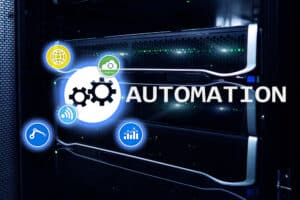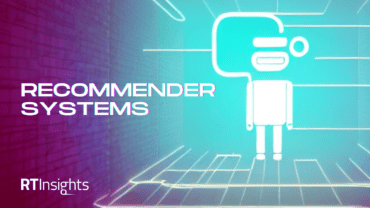
Human-machine collaboration is where enterprises must head, especially as the automation market continues to advance with such breakneck speed.
Organizations continue to prioritize ways to apply automation, aimed at achieving the resilience and agility required to advance in today’s fast-paced, digital world. However, approaches to automation up until now fail to accelerate digital transformation and unlock human potential when and where it’s needed most—and this problem is two-fold. First, legacy rules-based automation lacks the necessary flexibility and intelligence to yield sustainable efficiency that scales. Second, due to lackluster or non-existent change management, assumed negative connotations of automation as a replacer vs. augmenter have continued to perpetuate, impeding its ability to be widely adopted. Collectively, we must do a better job of implementing automation while considering the human element and ridding the idea that its sole existence is to replicate or replace skilled workers.
Technology doesn’t simply create or erase jobs—it evolves them
Human-machine collaboration is the path forward to creating a future that has a stronger and more sustained, and balanced workforce. In fact, survey findings show that when respondents were asked “who is the most crucial beneficiary of automation—the company, the employee experience, or the customer experience”—nearly half of respondents (43%) said the employee is the most important aspect of the technological advancement, followed by customer experience (34%) and the company (23%).
See also: 5 Steps CIOs Can Take to Democratize Automation
The reality is this—if you place an emphasis first and foremost on the human element of both internal and external experiences, every stakeholder can benefit.
1) Empowering the Employee
From sorting out the kinks of hybrid work to seeing 4 million Americans quit every month for nearly a year now, many forces have and continue to shape the employee experience—including stress and burnout. According to the American Psychological Association’s 2021 Work and Well-being Survey, “nearly 3 in 5 employees reported negative impacts of work-related stress, including lack of interest, motivation, or energy (26%) and lack of effort at work (19%). Meanwhile, 36% reported cognitive weariness, 32% reported emotional exhaustion, and an astounding 44% reported physical fatigue—a 38% increase since 2019.”
By introducing automation to the everyday employee experience and ensuring individuals are not inundated with mounding workloads, wasted time on repetitive tasks and other inefficiencies can be reduced, providing more time to focus on meaningful, higher-value tasks. In fact, a Salesforce survey found that 89% of automation users are more satisfied with their job, and 84% are more satisfied with their company due to using automation in the workplace. With greater satisfaction and productivity, an environment of success and collaboration can be fostered. A human-centered approach to automation successfully bridges two worlds, where the work done by machines complements and enhances the skills and abilities of human employees.
2) Supporting the Enterprise
Reduce cost. Save time. Increase accuracy. Automation in the enterprise provides the edge needed to remain agile and relevant in today’s competitive marketplace. Given the variability of handwritten forms (e.g., messy handwriting, text outside of boxes, or crossed-out information) and multiple other modalities being introduced (like images), legacy technology can not keep pace to deliver as accurately or quickly. With some enterprises processing millions of pages each year, the current broken model often adds extra admin work for employees to correct errors, leading to longer turnaround times.
The key is to elevate human intelligence with machine performance to improve volume, accuracy, and time to service. For example, the financial advisor landscape predicts admin load will increase by 24% in the coming years. That’s critical time taken away from their ability to foster customer relationships or complete value-added activities. Introducing a human-centered approach to automation would speed up the processing times and free resources for employees.
3) Creating a Lasting Impact on the End Consumer
The forms associated with multi-stage processes, like mortgage loans, insurance applications, and government programs, are an elongated waiting game for many customers and constituents. For example, currently, it’s estimated to take 30 days to know whether you’ve been accepted into a food stamp program. Limbo periods directly impact lives with a range of negative outcomes for individuals waiting to receive food assistance to provide for their families.
It’s critical for enterprises to understand how best to utilize augmentative technology to create a positive, lasting impact on the end customer. Implementing human-centered automation helps streamline operations, improve customer service experiences, and drive better outcomes no matter the vertical.
The Future of Automation is Human-Centered
Not only can automation create more meaningful work, but it can also transform organizations at every level, contributor, and stakeholder. Human-machine collaboration is where enterprises must head, especially as the automation market continues to advance with such breakneck speed.
Gone are the days of legacy technology stunting efforts due to a lack of flexibility and agility—unable to bend for new use cases or a significant influx in work. We must enable more synergistic ways of working, bridging the gap between human understanding and machine processing without disruption or change management burden.
Together, humans and machines can accomplish much more than when siloed—and the capabilities are just getting started.




























